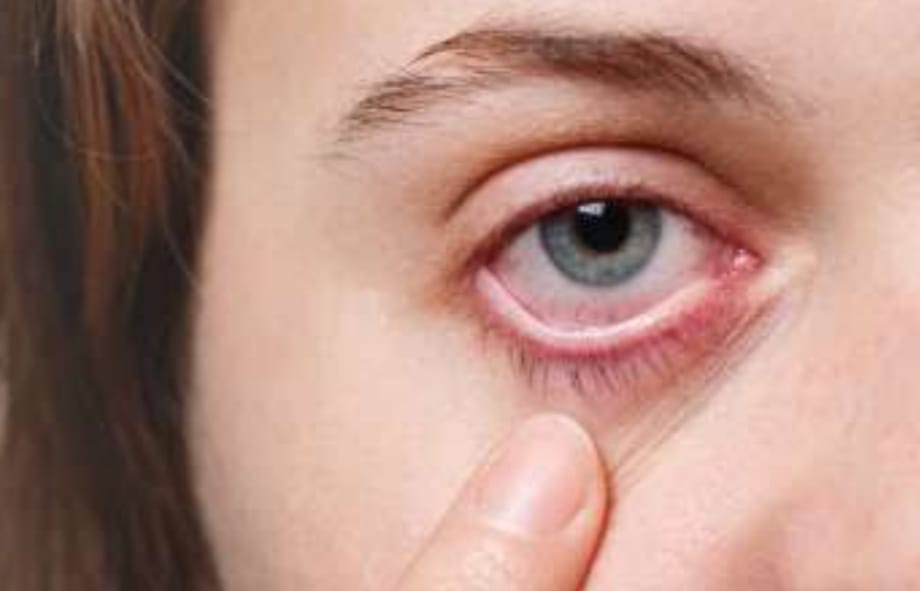
Glaucoma Awareness Month: Myths, Risk Factors- All You Need To Know
Glaucoma is a group of eye conditions that, if left untreated, can gradually rob you of your vision.
Are you experiencing halos around lights, blurred vision, difficulty adjusting to low light, or a gradual loss of indirect vision? These could be early warning signs of a condition that affects millions of people worldwide: glaucoma. Glaucoma is a group of eye conditions that, if left untreated, can gradually rob you of your vision. But fret not! We'll explore the ins and outs of glaucoma: its causes, symptoms, risk factors, and steps you can take to protect your vision. Let's unravel the mysteries of glaucoma and regain control over your eyesight.
Glaucoma Unveiled: Understanding The Basics
Dr monica Gandhi, who is an Associate Medical director at Dr Shroff’s Charity Eye Hospital, in New delhi said, "Glaucoma is an eye condition that affects the nerve responsible for vision. This nerve, which transmits visual information to the brain, gets damaged. It is often associated with increased pressure inside the eye, leading to gradual vision loss. It is also known as a 'silent thief of sight' as it can progress without noticeable symptoms until significant damage has occurred."
Blurry Vision: A Sign To Pay Attention To
"Glaucoma often has no noticeable symptoms, and vision may seem normal. However, as the condition progresses, you may experience blurred vision, difficulty adjusting to low light, reduced peripheral (side) vision, and seeing halos around lights. If you notice any of these symptoms, it's important to see an eye doctor for a comprehensive eye exam," said, Dr monica Gandhi.
Risk Factors: Who's More Prone To Glaucoma
Talking about the risk factors of Glaucoma, Dr monica Gandhi said that anyone can develop glaucoma, but certain factors can increase your risk.
"Glaucoma becomes more common with advancing years. Family history and genetics play a role, with individuals having relatives affected by glaucoma being at a higher risk. Other factors contributing to glaucoma include elevated eye pressure, certain medical conditions like diabetes, and prolonged use of steroids. Understanding these risk factors can help identify individuals who may need closer monitoring and early intervention to manage glaucoma effectively," she added.
Testing For Glaucoma
Screening for Glaucoma includes thorough eye check-ups that are vital for identifying the condition. Tonometry measures the pressure inside the eye, and visual field tests check your side vision. Evaluating the optic nerve helps determine its health, and advanced imaging methods assist in making an accurate diagnosis, which is important for managing glaucoma effectively.
Protecting Your Vision: Treatment and lifestyle Measures
While there is no cure for glaucoma, early detection, and treatment can help slow down its progression and prevent further vision loss. Treatment options may include eye drops to lower intraocular pressure, oral medications, laser therapy, or in severe cases, surgery. It's important to follow the treatment plan prescribed by your eye doctor and attend regular follow-up appointments.
In addition, certain lifestyle changes can also help manage glaucoma. Here are some of the listed by Dr monica Gandhi:

Maintaining a healthy diet and exercise routine
Avoiding smoking and excessive alcohol consumption
Protecting your eyes from UV rays with sunglasses
Managing stress levels
Taking medications as prescribed.
If neglected, glaucoma is an eye ailment that can result in permanent vision loss.
It is important to be aware of the risk factors, symptoms, and treatment options for glaucoma, and to prioritise regular comprehensive eye exams, especially if you are at higher risk.
Myths Around Glaucoma
The prevailing myths surrounding glaucoma have panicked several people. It is decisive to dispel misinformation about this silent eye condition, which poses a threat to vision without displaying early warning signs. Here, we debunk some common myths around glaucoma, offering clarity and promoting proactive eye care.
To start with, Dr.Kamala Subramanian, who is the Head of the Department-Glaucoma Sankara Eye Hospital, shimoga listed the following myths:
Myth 1: Glaucoma derives only from a strong family history
Fact: Contrary to common perception, glaucoma is not solely tied to genetic factors. While a family history of glaucoma can elevate an individual's risk, it's essential to acknowledge that other factors also play substantial roles in the onset of this eye condition. Extended use of steroids for asthma, medications for rheumatoid arthritis, autoimmune diseases, skin conditions, and a history of eye injuries can also contribute to the development of glaucoma.
Myth 2: No Alternatives if medications fail
Fact: Panic should not set in if symptoms appear. Surgical and laser procedures are available to slow down the disease when medications prove insufficient. Consulting an expert ophthalmologist can lead to suitable treatments and prevent irreversible blindness.
Myth 3: Glaucoma occurs only if you have elevated intraocular pressure (IOP)
Fact: Glaucoma results from optic nerve damage, not just high IOP. The pressure elevation happens due to the buildup of aqueous humor, causing damage to the optic nerve.
Myth 4: people with good eyesight won’t develop glaucoma
Fact: Glaucoma can occur to anyone, even if you have good eyesight. It is not that if you have a perfect vision, you won’t develop Glaucoma because people won’t notice symptoms until the disease has reached moderate or advanced stages.
Myth 5: Glaucoma can be cured with dietary modification
Fact: Glaucoma cannot be cured with dietary modifications alone. While a healthy lifestyle, including a balanced diet, is beneficial for overall well-being, it cannot replace medical treatment for glaucoma.
Myth 6: Glaucoma affects only the elderly
Fact: Glaucoma can affect individuals aged 20 to 50 and even infants due to irregular ocular development. It can affect people of all ages even in newborns. The open-angle glaucoma occurs mostly in older people. Some babies develop congenital glaucoma while other children have other eye diseases that can lead to secondary glaucoma. Different types of glaucoma affect different age groups.
Myth 7: Unattended cataracts can cause glaucoma &irreversible vision loss
Fact: Cataracts and glaucoma are distinct conditions. Cataracts result from the clouding of the eye's lens, causing vision issues. Both share common risk factors, but one doesn't transform into the other. Cataracts are treatable and occur as a result of getting old usually sometimes after the age of 40. Whereas Glaucoma can occur irrespective of age and people with diabetes have a higher risk of developing glaucoma.
Myth 8: Excessive Screen Time Raises Glaucoma Risk
Fact: There's no scientific evidence linking excess screen time to glaucoma. However, myopia (nearsightedness) patients spending extended periods at screens may be at risk.
In conclusion, Dr Avijit Paul, who is a Consultant at Disha Eye Hospitals said, "In glaucoma, there is irreversible structural and functional damage of the optic nerve. It has been called the silent thief of vision in mild to moderate-stage patients who remain asymptomatic. At this stage, some patients become skeptical as there are no symptoms and ignore treatment and later present with advanced damage which is untreatable. Because of a lack of awareness, many family members remain casual and don’t go for eye examinations. It is always better to diagnose and treat the same early to prevent irreversible loss."

"After starting treatment, some patients discontinue it and don’t come for follow-up because of lack of awareness, financial problems, and drug side effects which may lead to permanent loss of vision. So patients should do regular follow-ups to detect any progression with existing treatment. In progression, more aggressive treatments are required and sometimes surgeries should be considered," he added.





 click and follow Indiaherald WhatsApp channel
click and follow Indiaherald WhatsApp channel